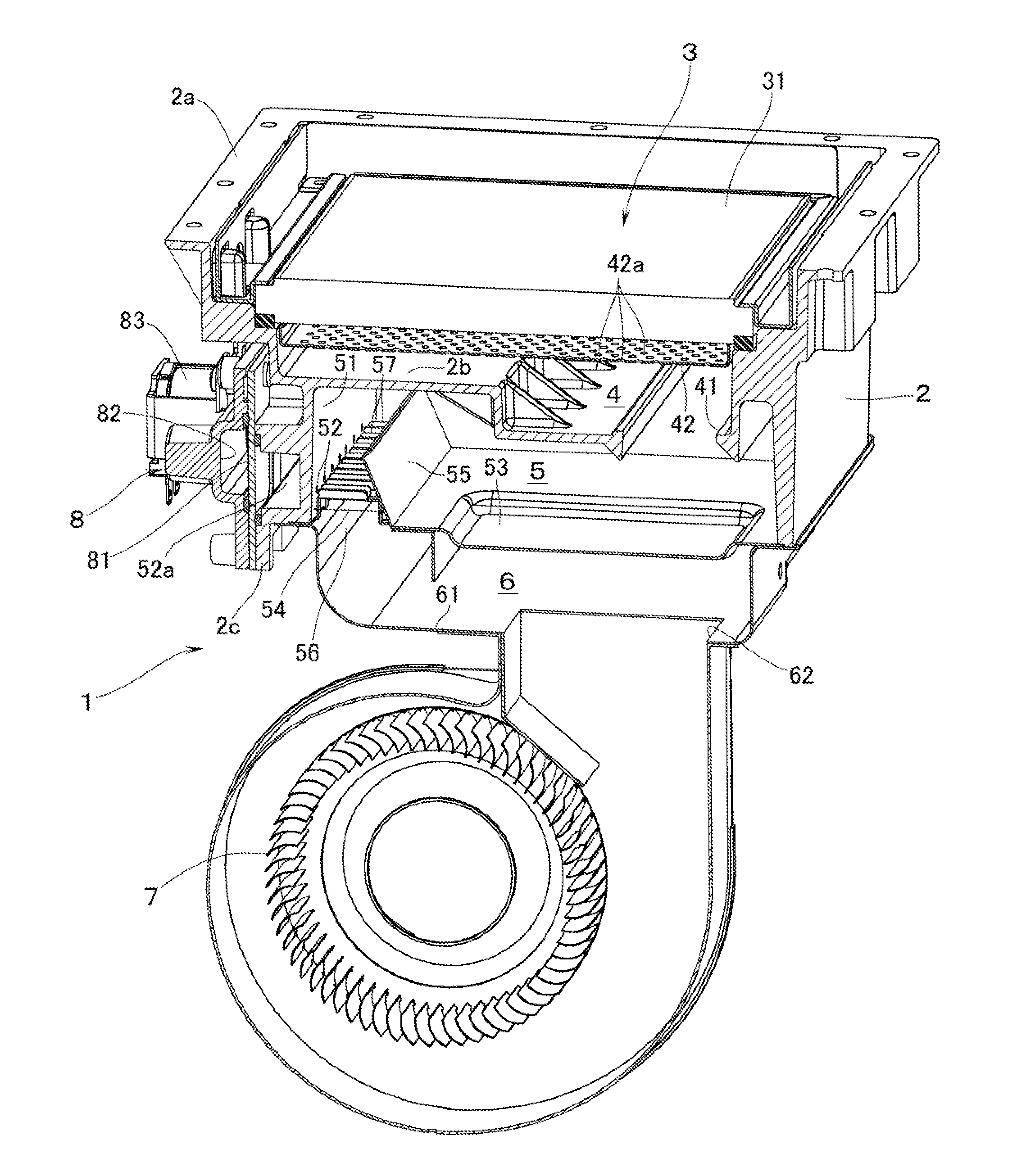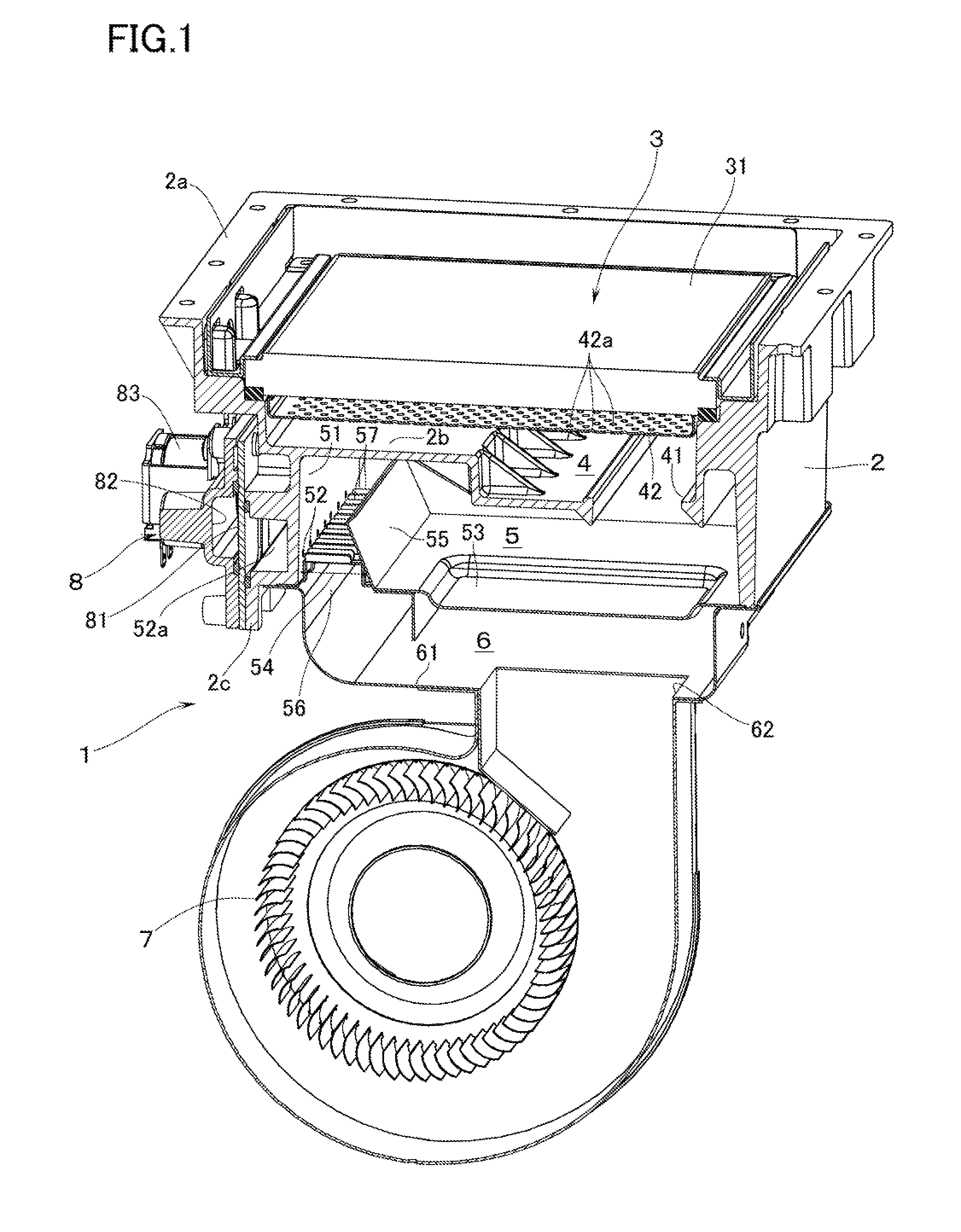Combustion plate
a technology of combustion plate and combustion chamber, which is applied in the direction of combustion type, burner material specification, burner, etc., can solve the problems of premixed gas that recirculates back, flashbacks are likely to occur, and interfere with each other
- Summary
- Abstract
- Description
- Claims
- Application Information
AI Technical Summary
Benefits of technology
Problems solved by technology
Method used
Image
Examples
Embodiment Construction
[0017]With reference to FIG. 1, reference numeral 1 denotes a totally aerated combustion burner (or a fully primary aerated burner). The burner 1 has a burner main body 2 which is formed into a box shape so as to open upward, and a combustion plate 3 which is mounted on an upper part of the burner main body 2. Description will be made hereinafter on condition that the width direction of the burner 1 is defined as a lateral side direction and that the depth direction of the burner 1 is defined as a longitudinal (back-and-forth) direction.
[0018]Around an outer periphery of the upper surface of the burner main body 2, there is disposed a flange portion 2a to which is connected a lower end of a combustion housing (not illustrated) in which are housed a heat exchanger for supplying hot water or for heating a residential space. Further, the burner main body 2 is provided therein with: a distribution chamber 4 which faces the lower surface of the combustion plate 3; and, on the lower side ...
PUM
 Login to View More
Login to View More Abstract
Description
Claims
Application Information
 Login to View More
Login to View More - R&D
- Intellectual Property
- Life Sciences
- Materials
- Tech Scout
- Unparalleled Data Quality
- Higher Quality Content
- 60% Fewer Hallucinations
Browse by: Latest US Patents, China's latest patents, Technical Efficacy Thesaurus, Application Domain, Technology Topic, Popular Technical Reports.
© 2025 PatSnap. All rights reserved.Legal|Privacy policy|Modern Slavery Act Transparency Statement|Sitemap|About US| Contact US: help@patsnap.com



